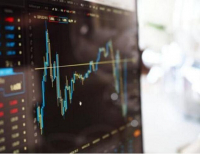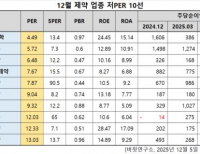Macro Economics Summary
* Macroeconomic analysis is the study of the overall performance of the economy (output, labor, financial, and foreign exchange markets).
* Real gross domestic product – The total amount of goods and services produced annually.
* Increases in real GDP indicate economic growth, while decreases in real GDP occur during economic downturns.
* Okun’s Law – when real GDP is growing rapidly, the unemployment rate tends to decline; when real GDP is declining or growing slowly, the unemployment rate tends to rise.
* Prime interest rate – the base or lowest rate charged by the nation’s largest banks to their corporate customers for short-term loans.
* A rise in interest rates typically leads to a downturn in economic activity.
* Partial equilibrium analysis – analysis of demand is restricted to a single market, e.g. beer, pretzels, coconuts, etc.
* Mercantilism – economic theory before classical economics. Mercantilists believed that the wealth of a nation was determined by the amount of bullion or precious metal that it could accumulate. Thus, mercantilists suggested heavy subsidies for exports to encourage them, while suggesting strict trade barriers to discourage imports.
* Classical economics – the realm of economic thought from The Wealth of Nations up until the 1930s. The primary contribution of classical economics is laissez-faire (“allow them to do”) economics, which suggested the government play little or no role in attempting to bring the economy to full employment through demand management, because the economy could get there by itself.
* Keynesian macroeconomic analysis – emphasizes factors such as sluggish price adjustment that result in frequent periods where the economy can experience low growth in output and high unemployment. In such analysis, the government can play a critical role in demand-side management to ensure full employment.
* Monetarists – The economy is fundamentally stable and therefore government intervention produces instability. The role of the central bank is to establish a low, steady rate of growth of the money supply.
* New Classical Macroeconomics – government policies are considered important in their potential to affect output only to the extent that they are “supply side” policies.Real business cycle theories – attribute fluctuations in the growth rate of output to such factors as changes in the speed at which innovations are discovered, or changes in the availability of key inputs (supply side shocks).
* Neoclassical model – prices do adjust to restore equilibrium in markets, despite temporary demand-side shocks.Rational expectations – consumers and investors form opinions about the direction of the economy based on all of the information available to them.
* A recession is 6 or more months of negative growth in real GDP
* Micro vs. Macroeconomics:
1. Macro focuses on the performance of the entire economy
2. Macro focuses on the overall goals of the economy, such as:
a. Growth in real GDP (avg. for US is 3.3%)
b. Low unemployment (avg. for US is between 5% and 5.5%)
c. Balance of trade
d. Stable prices
3. In Macro there is an important role for money
4. Macro is a general equilibrium framework (instead of a partial equilibrium framework)
* Gross Domestic Product (GDP) – the market value of all the final goods and services produced in an economy in a given year.
· This is a “flow” measure
· Goods and services produced, not necessarily sold
· Final means not for resale
· Market value means it must be exchanged in the market
· Market value = sum of (PxQ)
* Real GDP – what GDP would have been had prices not changed from some base year.
So who buys the GDP? C + Ig + G + (X – M)
1. Consumption (C) – largest & most stable component. Does not include housing
2. Investment (Ig) – spending on new plant & equipment. Not stocks & bonds. Falls as interest rates rise. This is the least stable component because a.) it is postponeable, and b.) it is based on anticipation of the future. Gross investment = adding to capital stock (i.e. buying new equipment) + consumption of fixed capital (i.e. replacing worn out / depreciated equipment)
3. Government purchases of goods & services – does not include transfer payments (e.g. Social Security)
4. Net exports = exports – inports
* Price changes:
* Consumer Price Index (CPI) – an index of a fixed “basket of goods” for a typical urban family of 4 (Core CPI excludes food & energy).
* Why does this not reflect the cost of living?
· Consumers substitute inferior goods/stores for superior ones
· There may be quality changes (hedonic pricing)
· The basket may not be applicable to everyone
* Nominal gross domestic product – the market value of final goods & services produced by labor and property located in the economy over a given year.
* Real GDP – GDP measured using constant (base year) prices. Computed by taking the geometric average of indexes created from two computed growth rates (a geometric average is the square root of the product of a set of numbers).
* Gross national product (GNP) – the market value of final goods and services produced by labor and property supplied by legal residents of the economy over a given year (may be located abroad).
* Net factor payments from abroad (NFP) – the difference between factor income rec’vd from the rest of the world and the payments of factor income to the rest of the world.Components of Real GDP:
· Consumption expenditures – expenditures by households on durable and non-durable goods and services.
· Investment – purchases of capital goods by firms. Investment also includes the purchase of new houses, as well as expenditures on plant and equipment:
o Consumption of fixed capital – depreciation
o Net investment – adding to the stock of capital (i.e. the stock of PPE)
· Government expenditures, not including transfer payments (i.e. payments for which no service is performed, such as Social Security)
· Net exports
Deficit – when taxes are not sufficient to support government spending
Surplus – when taxes exceed government spending
Inflation – a rise in the general level of prices.
Deflation – a fall in the general level of prices.
Consumer Price Index (CPI) – measures Δ in prices for a typical urban family of 4.
GDP Deflator – measures the average change in the prices of goods that make up the GDP = [nominal GDP / real GDP] x 100
Labor force – the sum of the number of employed plus the number of unemployed.
Unemployment rate – the percentage of the labor force who are unemployed.
Participation rate – the fraction of the working-age population that participated in the labor force, either as employed or unemployed workers.
* Sources of unemployment:
· Cyclical unemployment – results from fluctuations in the economy.
· Frictional unemployment – results from new entrants, quits, and fires.
· Structural unemployment – a mismatch in the skills offered by workers and the skills required for vacant positions.
* Natural unemployment rate – incorporates frictional and structural unemployment.
*Sources of sales growth:
· Changes in prices
· Changes in the real economy
· Growth in the industry overall
· Increase in market share
* Unemployment : Each month, the BLS survey 60,00 people and asks them:
1. Are you working?
2. Have you sought work in the last month?
· If the answer is no, then they are not in the labor force (e.g. retirees, students, homemakers)
Participation rate = Labor forces / (Population/in the ages of 15-70 who are not in mental or penalinstitution
Unemployment rate = Unemployed / Labor force
* Causes of unemployment:
· Cyclical unemployment – due to a deficiency of total demand
· Frictional unemployment – new entrants or reentrants due to quitting or getting fired
· Structural unemployment – job search due to structural changes in the economy (e.g. getting laid off)
* NAIRU – non-accelerating inflation rate of unemployment, also called the natural rate of unemployment. This is also called “full employment,” because it is the lowest sustainable rate of unemployment in an economy. In terms of output, the NAIRU corresponds to potential output, the highest level of real gross domestic product that can be sustained at any one time.
If U* is the NAIRU and U is the actual unemployment rate, the theory says that:
· if U < U* for a few years, inflationary expectations rise, so that the inflation rate tends to accelerate;
· if U > U* for a few years, inflationary expectations fall, so that the inflation rate tends to slow (there is disinflation); and
· if U = U*, the inflation rate tends to stay the same, unless there is an exogenous shock.
※출처를 밝히면 자유롭게 인용 가능합니다.

